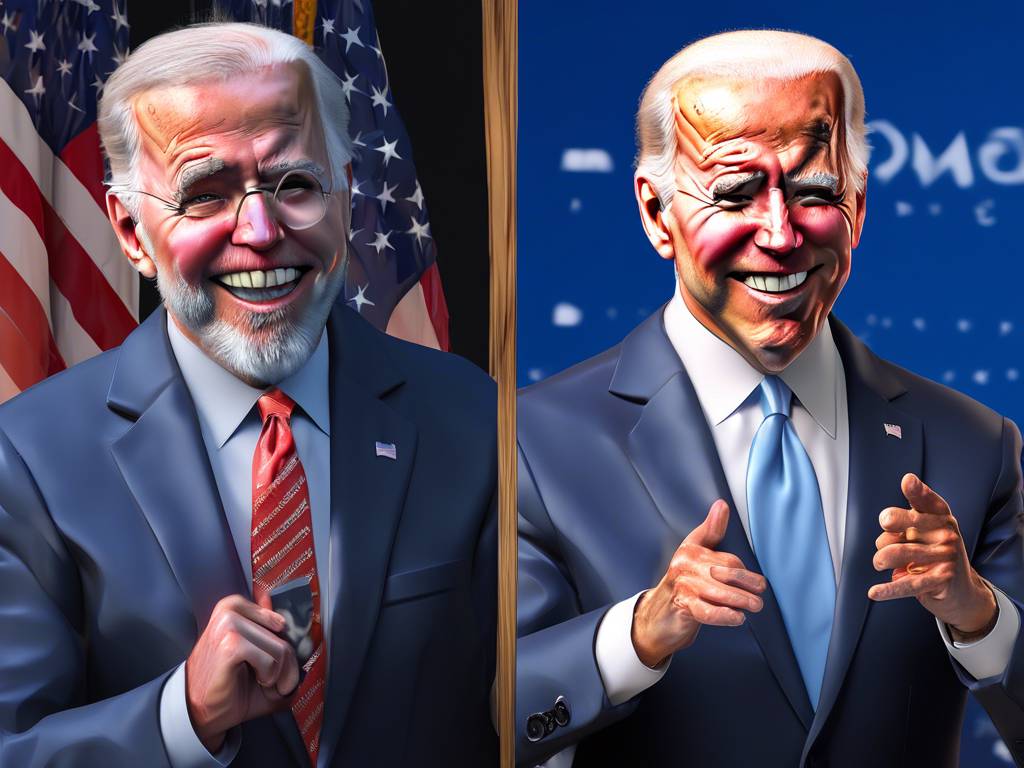Sam Bankman-Fried Considers Various Strategies to Restore His Image
A document recently published by prosecutors reveals that Sam Bankman-Fried, the founder of FTX cryptocurrency exchange, considered several strategies to restore his public image following his arrest. The document, a Google Doc written by Bankman-Fried, outlines various ideas, though he admits they are “random” and “probably bad.” These ideas include blaming lawyers and the bankruptcy process for stealing his company, as well as promoting anti-Binance sentiments. Bankman-Fried also contemplated coming out as a Republican and against “the woke agenda” on Tucker Carlson’s show. Additionally, he considered speaking with journalists such as Matt Levine and Michael Lewis.
Bankman-Fried’s Ideas to Restore His Image
In the document published by prosecutors, Bankman-Fried’s ideas to restore his image include:
- Blaming lawyers and the bankruptcy process for stealing his company
- Coming out as a Republican and against “the woke agenda” on Tucker Carlson’s show
- Talking about how lawyers are destroying value and throwing entrepreneurs under the bus
- Speaking with journalists such as Matt Levine and Michael Lewis
- Discussing the effects of his antidepressant medication
- Sending out a Twitter poll asking people for advice
- Trying to get people to support the true narratives
Possible Strategies and Alliances
In addition to the above ideas, Bankman-Fried also considered other possible strategies and alliances:
- Blaming lawyers and the bankruptcy process: Bankman-Fried has consistently promoted this line of argument, despite being forbidden from doing so during the trial.
- Talking to journalists: Bankman-Fried considered speaking with journalists such as Matt Levine and Michael Lewis, who wrote a book about his rise and fall.
- Discussing the effects of his antidepressant: Bankman-Fried mentioned a tweet thread related to his antidepressant medication, which he has taken for most of his adult life.
- Twitter poll and true narratives: Bankman-Fried suggested sending out a Twitter poll to gather advice from people and attempting to garner support for what he considers the “true narratives.”
Sentencing and Defense Arguments
Sam Bankman-Fried is scheduled to be sentenced on March 28. His defense team and supporters have requested a more lenient sentence of 63 to 78 months. However, prosecutors are arguing for a hefty sentence of up to 50 years based on the severity of the charges against him.
Hot Take: Bankman-Fried’s Desperate Attempts to Restore His Image
“Go on Tucker Carlsen [sic], come out as a Republican.” “Come out as extremely pro crypto, pro freedom.” “Come out with a strong anti-Binance message.”
These were just a few of the “random” and “probably bad” ideas that Sam Bankman-Fried reportedly considered in the days following his arrest, according to a new document published by prosecutors, as part of their argument that Bankman-Fried should be served with a hefty sentence of up to 50 years.
In the document, a Google Doc written by Bankman-Fried, he appears to consider a variety of ways to restore his public image, though he acknowledged, “these are all random probably bad ideas that aren’t vetted.” Many of them involve blaming the lawyers and the bankruptcy process for stealing away his company, a line of argument Bankman-Fried has been insistent in promoting, though he was forbidden from arguing such during the trial.
In fact, were Bankman-Fried able to make it on Tucker Carlson’s show, he planned on coming out as a Republican and against “the woke agenda,” but also talking about “…how the cartel of lawyers is destroying value and throwing entrepreneurs under the bus in order to cover up the incompetence of lawyers.”
Bankman-Fried also considered speaking with other journalists, including Matt Levine of Bloomberg and Michael Lewis, who wrote the book Going Infinite chronicling Bankman-Fried’s rise and fall. A separate document lists other potential figures in the media whom Bankman-Fried thought might serve as allies.
Bankman-Fried may also have been considering discussing the effects of his antidepressant; the entry on the Google Doc simply reads “Send this EmSam tweet thread,” referencing the prescription medication he has taken for most of his adult life and linking to another, unfortunately inaccessible, document.
Bankman-Fried’s final two ideas? “Send out a Twitter poll asking people what to do” and “Try to get people to support the true narratives.”
Bankman-Fried is set to be sentenced on March 28. Bankman-Fried’s lawyers and supporters have asked the court to impose a much more moderate sentence of 63 to 78 months.





 By
By
 By
By
 By
By

